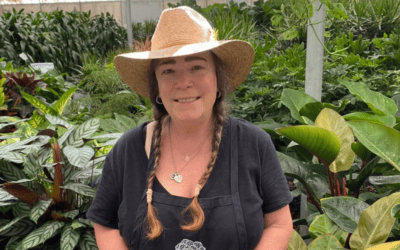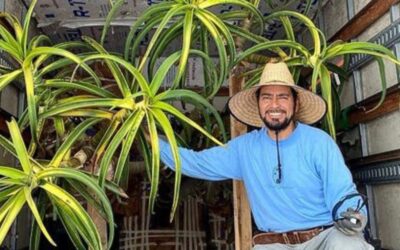Like many die-hard fans of the TV show “Friends,” if you’ve always longed for a pet chick and a duck, here’s a much more manageable alternative: hens and chicks! No, not the actual birds—we’re talking about Sempervivum plants, the easy-care, evergreen succulents that will make any garden 100 times cuter.
Sempervivum: The Spreading Succulent Plant That Sprouts Baby Chicks
In California, it’s a wise idea to stick to garden plants that can thrive in hot, dry weather and sandy soils. This will help make your garden much more water-wise and low-maintenance. Sempervivum is perfect for rock gardens and super sunny spots. It has adapted to survive in desert conditions, storing moisture in its plump leaves to keep it hydrated for longer periods of time.
Sempervivum stays low to the ground and spreads out, making it an excellent groundcover or filler plant, especially in rocky areas. Larger rosettes sprout tiny offsets like little succulent babies, hence the nickname “Hens and Chicks.” Sempervivum care is strangely exciting and rewarding when you see those cute little chickies appear! As if they weren’t adorable enough already, in the summertime, your hens and chicks will start sprouting clusters of pretty pink star-shaped flowers.

Sempervivum Care: Sunlight and Soil
Like most succulents, this desert dweller loves the sun. Sempervivum will develop the brightest colors when planted somewhere that receives a minimum of 6 hours of direct sunlight each day. It will still survive in partial sun, and if your area is particularly hot and dry, your plant may prefer a bit of afternoon shade to prevent its leaves from getting scorched.
Make sure the soil is loose, sandy, and quick-draining. This will help prevent the soil from getting soggy after any heavy rain. Succulents hate having wet feet! If your soil is too heavy, mix in peat to loosen it up. Soil with a neutral pH between 6.5–7.5 is ideal.
The best time to plant Sempervivum is in early spring or fall. This way, the weather is nice and mild so that the soil temperature won’t shock your plants’ roots.
Watering Your Sempervivum Plants
You’d be amazed at how long these succulents can go without being watered! Typically, the natural amount of rainfall we get in California is enough to keep Sempervivum sufficiently quenched. However, if we’re going through a bit of a dry spell, and if the leaves of your hens and chicks start to look thin and puckered, you should give them some extra water.

Dividing the Chicks From the Hen Plant
Division is a normal part of perennial care, and Sempervivums are no different! You can separate the little chicks from the hen plant and replant them to create a whole new plant. However, you can’t just pluck them out as soon as they appear; you’ll need to wait until they’re ready.
The chicks will sprout on little stems called stolons. It isn’t old enough to be separated if the chick is still nestled within the hen and the stolon has leaves on it. You’ll know it’s ready when it shows these signs:
- The stolon has no leaves
- The stolon has lengthened, and the chick is sticking out from the hen plant
- Roots are beginning to shoot out from the chick

Gently wiggle the stolon to remove it from the mother plant, and then remove the chick from the stolon. Replant it in a shallow hole, tamp the area around the roots, and water it lightly to help it get established.
If you’re on the lookout for hens and chicks plants for sale in California, be sure to stop by OC Succulents. We have so many colorful varieties, plus an endless assortment of other exciting succulents to help complete your garden design.


